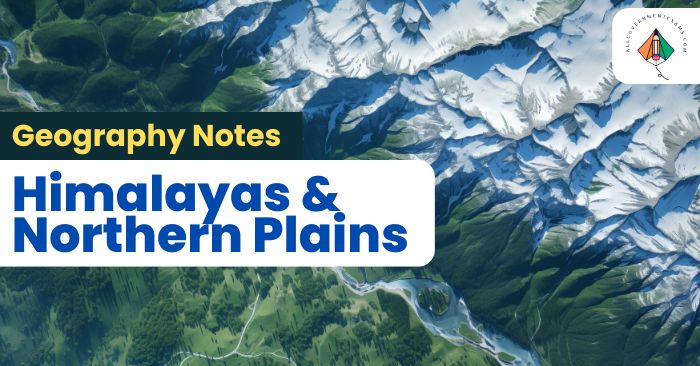Himalayas and Northern Plains Notes PDF
India’s physical features are very diverse, shaped by various geological events in the history of earth. The vast landmass of India formed during different geological periods through processes such as folding, faulting, and volcanic activity, as explained by the popular Plate Tectonic theory. One of the examples of this is the formation of the Himalayas in the northern part of India, which resulted from the collision of the Gondwana landmass with the Eurasian plate. The northern region has rocky terrain, with high mountain ranges, valleys, and deep gorges. In comparison, the southern part of India has stable, ancient landforms, including highly dissected plateaus, exposed rock formations, and distinct scarps. Between these two contrasting landscapes lies the Great Northern Plains with relatively flat terrain. India’s physical features can be categorised into distinct physiographic divisions, each contributing to the country’s rich geographical diversity. The Himalayas The Northern Plains The Indian desert The Peninsular Plateau The Coastal Plains The Islands The Himalayas The Himalayas are a young range of fold mountains that define the northern boundary of India. This vast mountain system stretches about 2,400 kilometres in an arc, with its width ranging from 400 kilometres in the west to 150 kilometres in the east. The altitudinal variations are notably greater in the eastern regions compared to the western part.

